Peng Wang
News: I have been named as a Highly Cited Researcher in the Clarivate's 2023 list.
My research has been focused primarily on two areas:
- developing novel computational diffractive imaging techniques (ptychography, 4D STEM) for cryogenic electron microscopy (Cryo-EM), light atomic detecting (O, Li elements), low dose imaging (beam sensitive materials), 3D reconstruction and EM field mapping, which can then tackle characterization challenges across the physical and life sciences, ranging from battery materials to biological macromolecules;
- in situ examining atomic structures of advanced materials and their functional properties with an emphasis on complex oxides and two-dimensional materials.
Google Scholar: https://scholar.google.co.uk/citation
ORCID:https://orcid.org/0000-0003-0788-6687
Research Profile: https://www.researchgate.net/profile/Peng_Wang134
There are open PhD positions in my group.
Feel free to contact me for details on the research themes below.
Big-data in Super-resolution Microscopy
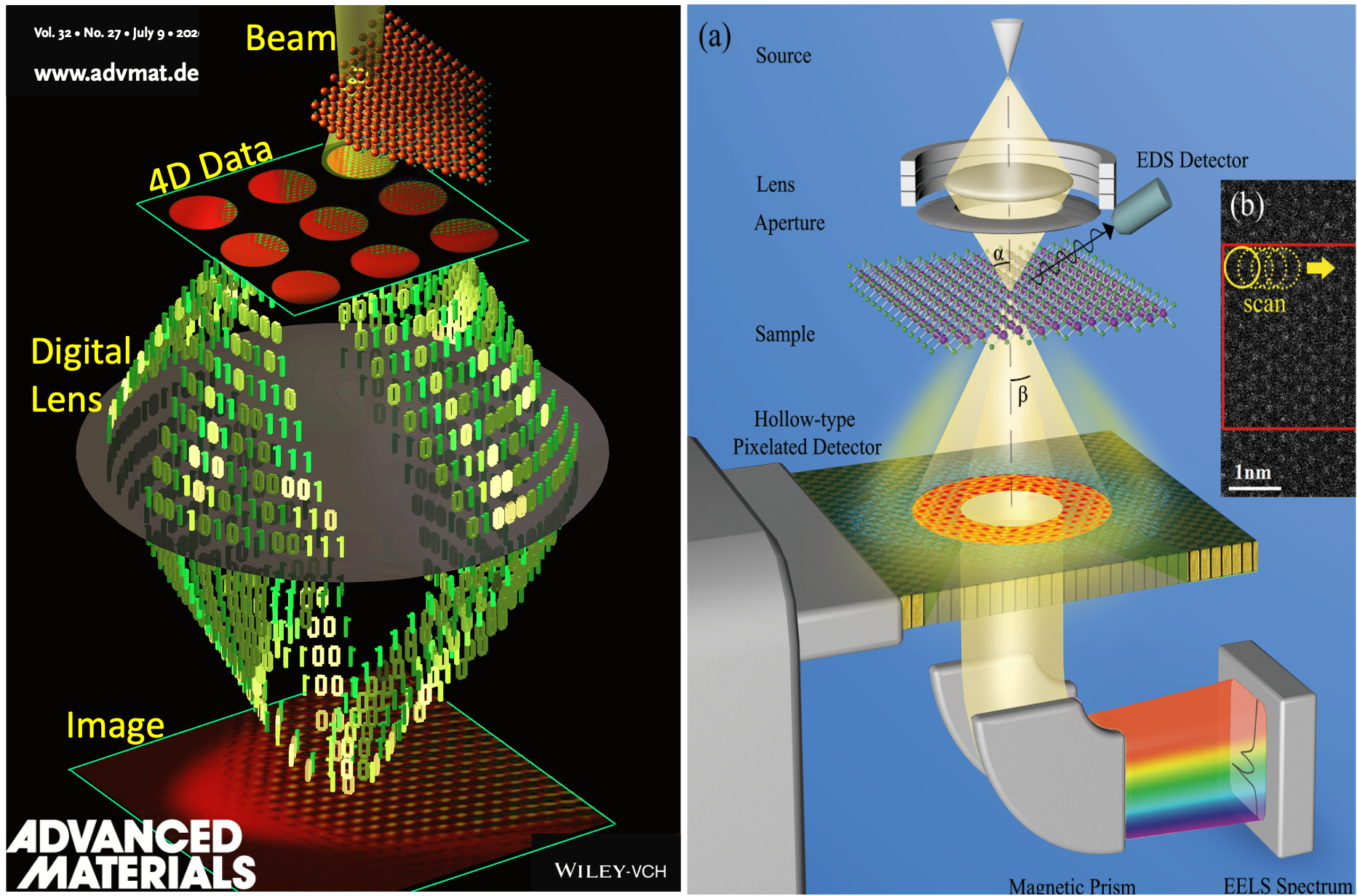
Ptychography is an emerging computational microscopy technique for acquiring images with resolution beyond the limits imposed by lenses, which has been applied to high resolution x-ray imaging in synchrotron facilities and accurate wavefront-sensing in space telescopes. Rather than looking at something big or far-away, we are aiming for visualizing the basic building blocks (such as proteins) of all life in three dimensions towards near-atomic resolution by developing ptychography on world-leading cryogenic electron microscopes (Nobel Prize winning technique), further enhanced by artificial intelligence and machine learning.
Nature Communications 14, 3027, (2023).
Nature Communications 13, 4787, (2022).
Nature Communications 12, 3011, (2021).
Nature Communications 11, 2773, (2020).
Nature Communications 8, 163, (2017).
Dynamic Field Mapping in Quantum Materials & Devices
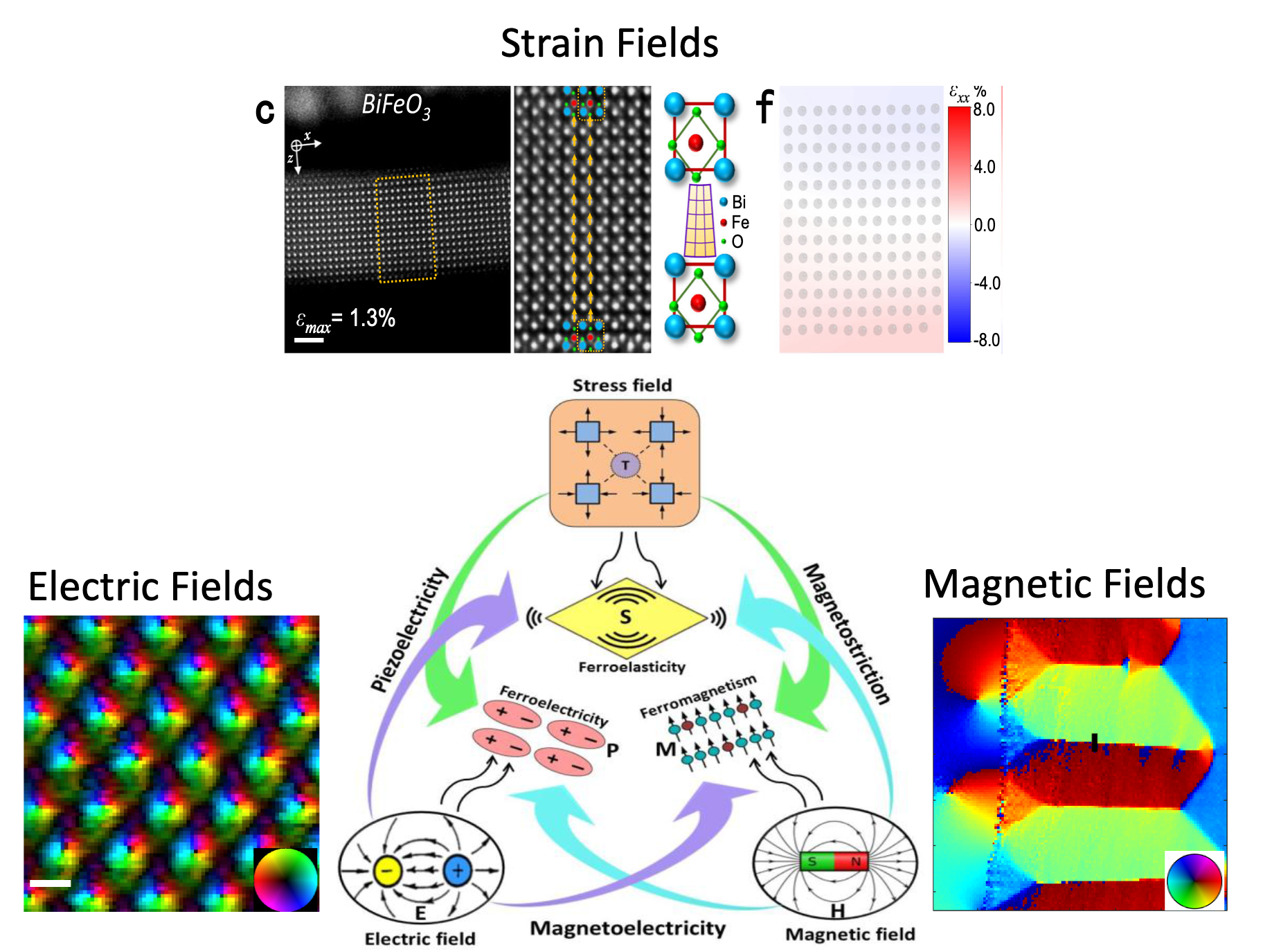
Direct visualisation of ferroic orderings (ferromagnetism) in materials at the atomically thin limit [1] is exciting not only from a fundamental physics perspective but is also critical for the characteristics of ferroelectric and ferromagnetic materials used in applications that include information storage and logic technologies. Quantitative information about field distribution with a high spatial resolution towards an atomic scale is indispensable for a complete understanding of the underlying physics behind the ferroic phenomena.
Nature 603, 63-67, (2022).
Nature 570, 87-90, (2019).
Nature Communications 13, 5116, (2022).
Nature Communications 13, 4332, (2022).
Nature Nanotechnology 16, 1201, (2021).
Nature Communications 10, 5589, (2019).
In-situ Characterization for Nano-devices
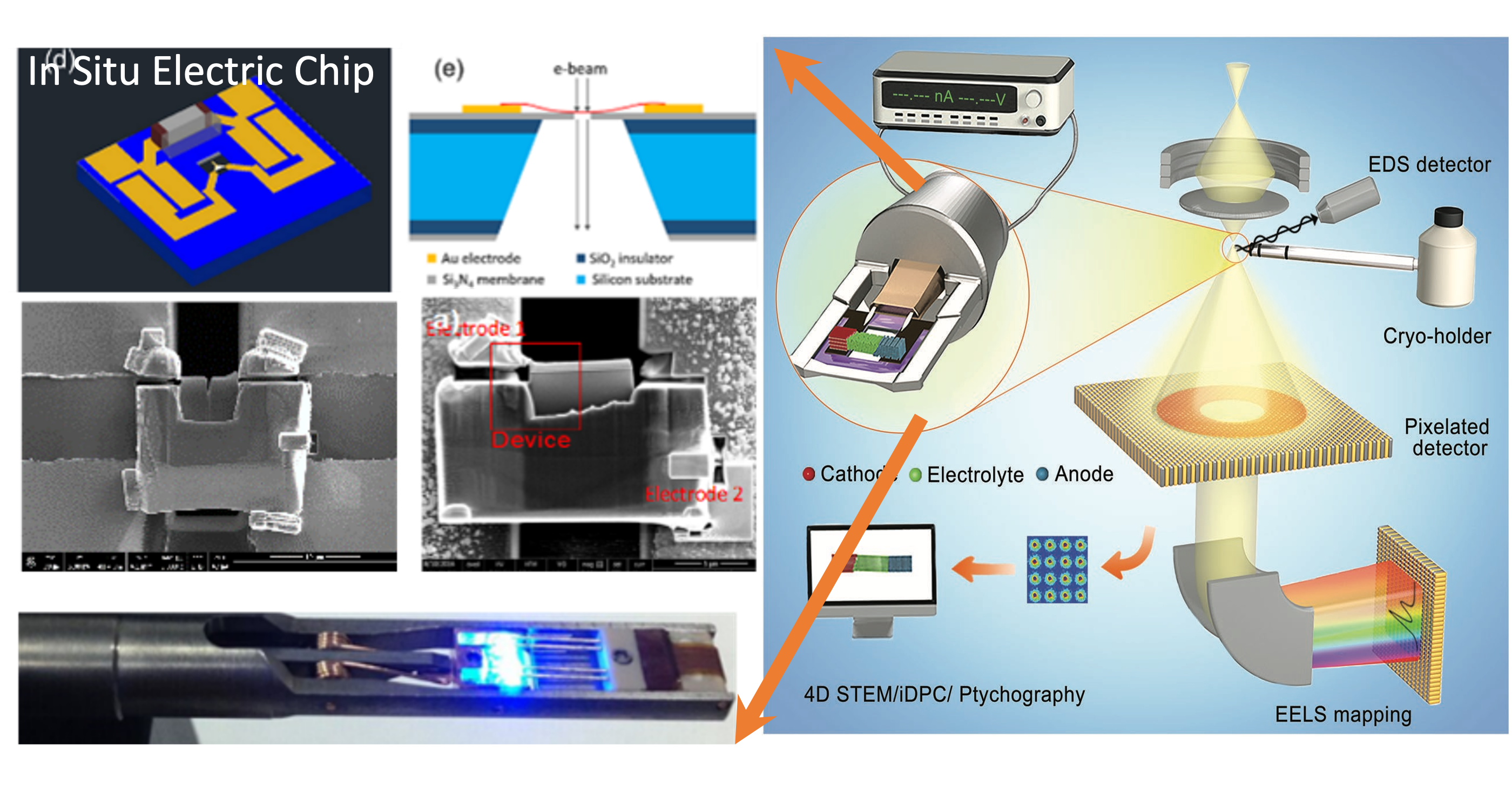
Combined with state-of-the-art ultrafast detectors, the development of innovative nanoscale device testing systems can provide an advanced in-situ experimental capability in aberration-corrected TEM. This integration has great potential for directly visualizing the atomic-scale evolution of structures in nanodevices during continuous external stimuli on sub-millisecond timescales.
Advanced Materials, e1903747, (2019).
Nature Electronics 1, 130-136, (2018).
Ultramicroscopy 194, 57-63, (2018).
Low-dose Imaging for Green and Energy Materials
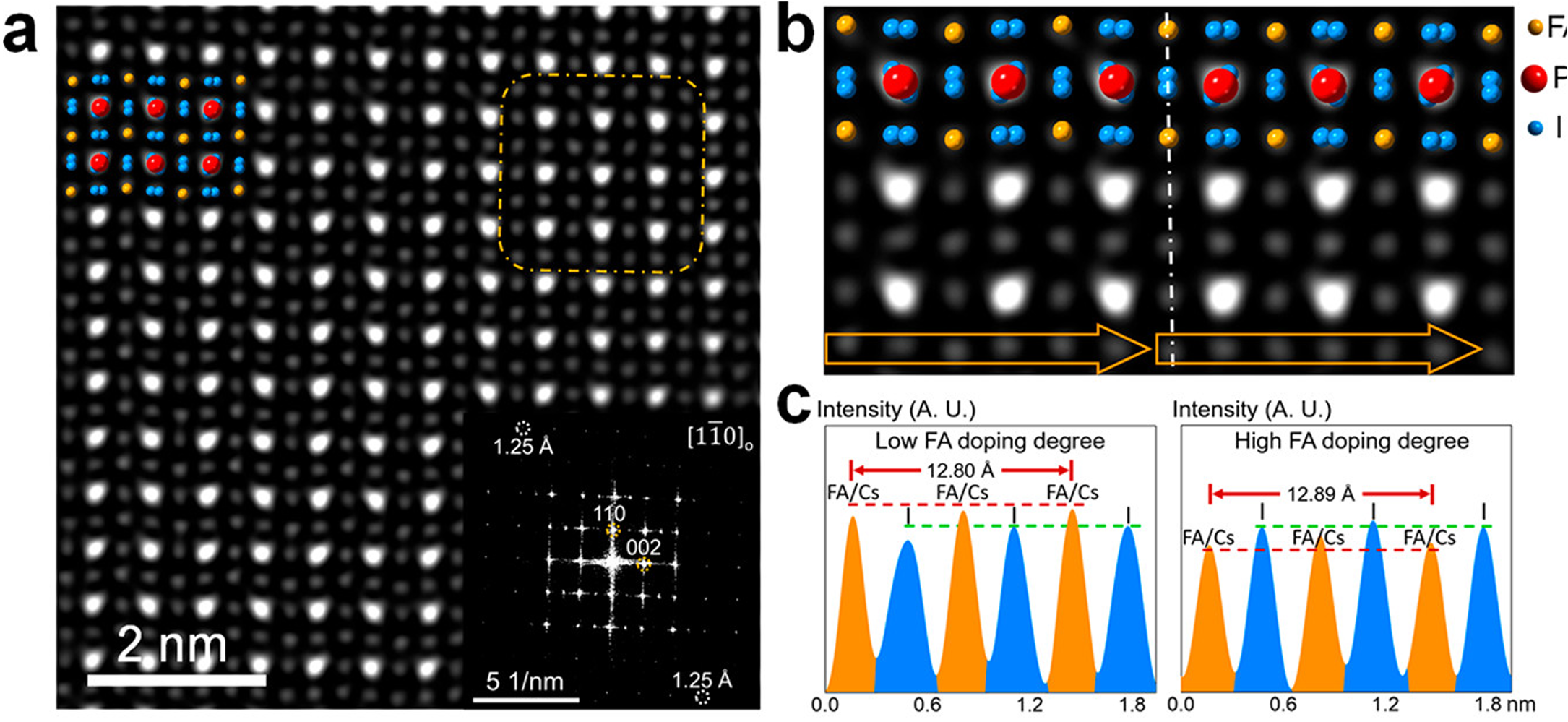
Materials for clean and sustainable energy, like zeolites, MOFs, lithium batteries, and solar cells, frequently feature light elements that produce faint signals in electron microscopy and can quickly deteriorate under an electron beam. The swift progress in low-dose 4D STEM ptychography at cryogenic temperature has opened up an unparalleled opportunity to investigate the atomic-scale structure of these materials
Nature Communications 13, 6158 (2022).
Nature Communications 11, 2773, (2020).
Nature Communications 10, (2019).
J Am Chem Soc 144, 1910-1920, (2022).
SELECTED PUBLICATIONS:
Novel Computational Imaging Developments:
-
Pei#, X., Zhou#, L., Huang#, C., Boyce, M., Kim, J. S., Liberti, E., Hu, Y., Sasaki, T., Nellist, P. D., Zhang, P., Stuart, D. I., Kirkland*, A. I. & Wang*, P. Cryogenic electron ptychographic single particle analysis with wide bandwidth information transfer. Nature Communications 14, 3027, (2023).
-
Ding, Z., Gao, S., Fang, W., Huang, C., Zhou, L., Pei, X., Liu, X., Pan, X., Fan, C., Kirkland, A. I. & Wang*, P. Three-dimensional electron ptychography of organic-inorganic hybrid nanostructuresLink opens in a new window. Nature Communications 13, 4787, (2022).
- L. Zhou, J. Song, J.S. Kim, X. Pei, C. Huang, M. Boyce, L. Mendonça, D. Clare, A. Siebert, C.S. Allen, E. Liberti, D. Stuart, X. Pan, P.D. Nellist, P. Zhang, A.I. Kirkland* & P. Wang*. Low-dose phase retrieval of biological specimens using cryo-electron ptychography. Nature Communications, 11, 2773 (2020).
- Song, B., Ding, Z., Allen, C. S., Sawada, H., Zhang, F., Pan, X., Warner, J., Kirkland, A. I. & Wang*, P. Hollow Electron Ptychographic Diffractive Imaging. Physical Review Letters, 121, 146101 (2018).
- Gao, S., Wang*, P., Zhang*, F., Martinez, G. T., Nellist, P. D., Pan, X. & Kirkland, A. I. Electron ptychographic microscopy for three-dimensional imaging. Nature Communications 8, 163 (2017).
- J. Song, C. S. Allen, S. Gao, C. Huang, H. Sawada, X. Pan, J. Warner, P. Wang* & A. I. Kirkland, Atomic Resolution Defocused Electron Ptychography at Low Dose with a Fast, Direct Electron Detector, Sci Rep, 9, 3919 (2019).
- Wang*, P., Zhang*, F., Gao, S., Zhang, M. & Kirkland, A. I. Electron Ptychographic Diffractive Imaging of Boron Atoms in LaB6 Crystals. Sci Rep 7, 2857 (2017).
- C Zhang, Y Feng, Z Han, S Gao, M Wang & P Wang*, Electrochemical and Structural Analysis in All-Solid-State Lithium Batteries by Analytical Electron Microscopy: Progress and Perspectives, Advanced Materials, e1903747 (2019) (Review).
- Wang, P., Behan, G., Takeguchi, M., Hashimoto, A., Mitsuishi, K., Shimojo, M., Kirkland, A. I. & Nellist, P. D. Nanoscale Energy-Filtered Scanning Confocal Electron Microscopy Using a Double-Aberration-Corrected Transmission Electron Microscope. Physical Review Letters 104, 200801 (2010).
- Wang, P., D’Alfonso, A. J., Findlay, S. D., Allen, L. J. & Bleloch, A. L. Contrast Reversal in Atomic-Resolution Chemical Mapping. Physical Review Letters 101, 236102 (2008).
Characterisations of 2D Crystals and Interfaces:
-
Zhai, L., Gebre, S. T., Chen, B., Xu, D., Chen, J., Li, Z., Liu, Y., Yang, H., Ling, C., Ge, Y., Zhai, W., Chen, C., Ma, L., Zhang, Q., Li, X., Yan, Y., Huang, X., Li, L., Guan, Z., Tao, C.-L., Huang, Z., Wang, H., Liang, J., Zhu, Y., Lee, C.-S., Wang, P., Zhang, C., Gu, L., Du, Y., Lian, T., Zhang, H. & Wu, X.-J. Epitaxial growth of highly symmetrical branched noble metal-semiconductor heterostructures with efficient plasmon-induced hot-electron transfer. Nature Communications 14, (2023).
- Han, L., Addiego, C., Prokhorenko, S., Wang, M., Fu, H., Nahas, Y., Yan, X., Cai, S., Wei, T., Fang, Y., Liu, H., Ji, D., Guo, W., Gu, Z., Yang, Y., Wang, P., Bellaiche, L., Chen, Y., Wu, D., Nie, Y. & Pan, X. High-density switchable skyrmion-like polar nanodomains integrated on silicon. Nature, 603, 63-67, (2022).
- Cai*, S., Lun, Y., Ji, D., Lv, P., Han, L., Guo, C., Zang, Y., Gao, S., Wei, Y., Gu, M., Zhang, C., Gu, Z., Wang, X., Addiego, C., Fang, D., Nie, Y., Hong*, J., Wang*, P. & Pan*, X. Enhanced polarization and abnormal flexural deformation in bent freestanding perovskite oxides. Nature Communications, 13, 5116, (2022).
- Zhou, J., Zhang, C., Shi, L., Chen, X., Kim, T. S., Gyeon, M., Chen, J., Wang, J., Yu, L., Wang, X., Kang, K., Orgiu, E., Samori, P., Watanabe, K., Taniguchi, T., Tsukagoshi, K., Wang, P., Shi, Y. & Li, S. Non-invasive digital etching of van der Waals semiconductors. Nature Communications, 13, 1844, (2022).
- Sun, H., Wang, J., Wang, Y., Guo, C., Gu, J., Mao, W., Yang, J., Liu, Y., Zhang, T., Gao, T., Fu, H., Zhang, T., Hao, Y., Gu, Z., Wang, P., Huang, H. & Nie, Y. Nonvolatile ferroelectric domain wall memory integrated on silicon. Nature Communications, 13, 4332, (2022).
- D Ji#, S Cai#, TR Paudel, H Sun, C Zhang, L Han, Y Wei, Y Zang, M Gu, Y Zhang, W Gao, H Huyan, W Guo, D Wu, Z Gu, EY Tsymbal, P Wang*, Y Nie* & X Pan*, Freestanding crystalline oxide perovskites down to the monolayer limit, Nature, 570, 87-90 (2019).
- Li, T., Guo, W., Ma, L., Li, W., Yu, Z., Han, Z., Gao, S., Liu, L., Fan, D., Wang, Z., Yang, Y., Lin, W., Luo, Z., Chen, X., Dai, N., Tu, X., Pan, D., Yao, Y., Wang, P., Nie, Y., Wang, J., Shi, Y. & Wang, X. Epitaxial growth of wafer-scale molybdenum disulfide semiconductor single crystals on sapphire. Nature Nanotechnology 16, 1201-1207, (2021).
- Gass, M. H., Bangert, U., Bleloch, A. L., Wang, P., Nair, R. R. & Geim, A. K. Free-standing graphene at atomic resolution. Nature Nanotechnology 3, 676-681 (2008).
- W Li#, J Zhou#, S Cai#, Z Yu, J Zhang, N Fang, T Li, Y Wu, T Chen, X Xie, H Ma, K Yan, N Dai, X Wu, H Zhao, Z Wang, D He, L Pan, Y Shi, P Wang*, W Chen, K Nagashio, X Duan & X Wang*, Uniform and ultrathin high-κ gate dielectrics for two-dimensional electronic devices, Nature Electronics, 2, 563 (2019).
- H Zhao, Y Zhao, Y Song, M Zhou, W Lv, L Tao, Y Feng, B Song, Y Ma, J Zhang, J Xiao, Y Wang, DH Lien, M Amani, H Kim, X Chen, Z Wu, Z Ni, P Wang, Y Shi, H Ma, X Zhang, JB Xu, A Troisi, A Javey & X Wang*, Strong optical response and light emission from a monolayer molecular crystal, Nature Communications, 10, 5589 (2019).
- Wang, M., Cai, S., Pan, C., Wang, C., Lian, X., Zhuo, Y., Xu, K., Cao, T., Pan, X., Wang, B., Liang, S.-J., Yang*, J. J., Wang*, P. & Miao*, F. Robust memristors based on layered two-dimensional materials. Nature Electronics, (2018).
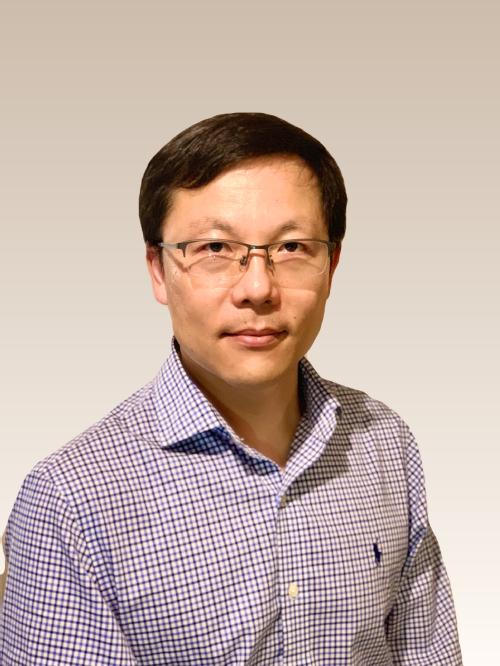
Associate Professor
Group: Condensed Matter Physics
Subgroup: Microscopy
Phone: +44 (0)24 765 28044 (Temporary)
Room: MAS 2.07
Email: Peng.Wang.3@warwick.ac.uk
ORCID:https://orcid.org/0000-0003-0788-6687
Google Scholar (H-index 61): https://scholar.google.co.uk/citation
For details on the group, research interest you may access:
